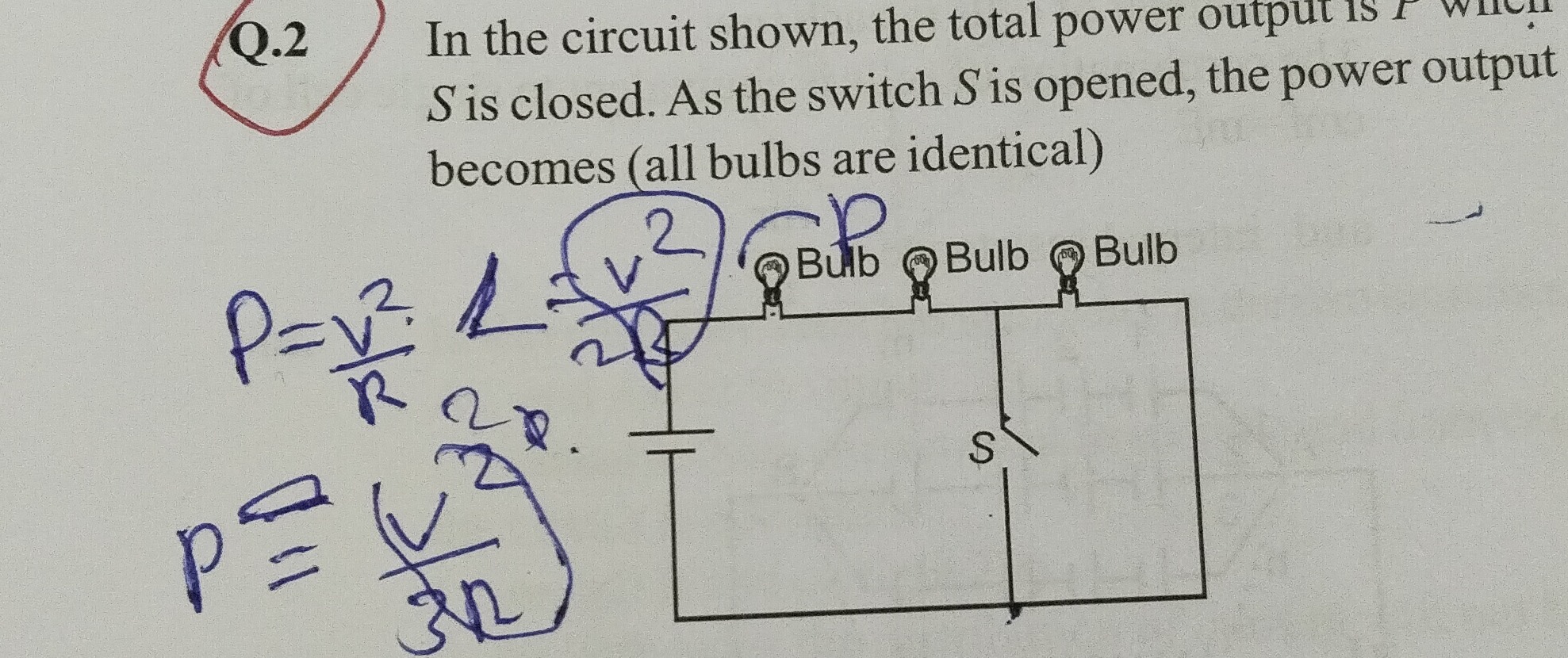Question
Question: In the circuit shown, the total power output is P when S is closed. As the switch S is opened, the p...
In the circuit shown, the total power output is P when S is closed. As the switch S is opened, the power output becomes (all bulbs are identical)

P/3
2P/3
P/2
3P/2
The power output becomes 32P.
Solution
Let V be the voltage of the battery and R be the resistance of each identical bulb.
-
When switch S is closed: The circuit consists of three bulbs connected in series. The switch S is connected between the junction of the second and third bulb and the negative terminal of the battery. When closed, the switch offers negligible resistance, effectively short-circuiting the third bulb. Therefore, the circuit behaves as if only the first two bulbs are connected in series to the battery. The equivalent resistance is Req,closed=R+R=2R. The total power output is given as P. Using the formula for power P=ReqV2, we have: P=2RV2
-
When switch S is opened: When the switch S is opened, the short circuit is removed. The circuit now consists of all three bulbs connected in series to the battery. The equivalent resistance is Req,opened=R+R+R=3R. The new power output, let's call it P′, is: P′=Req,openedV2=3RV2
-
Expressing the new power in terms of P: We are given P=2RV2. From this, we can express RV2 as 2P. Now, substitute this into the expression for P′: P′=31(RV2)=31(2P)=32P
Thus, when the switch S is opened, the power output becomes 32P.
